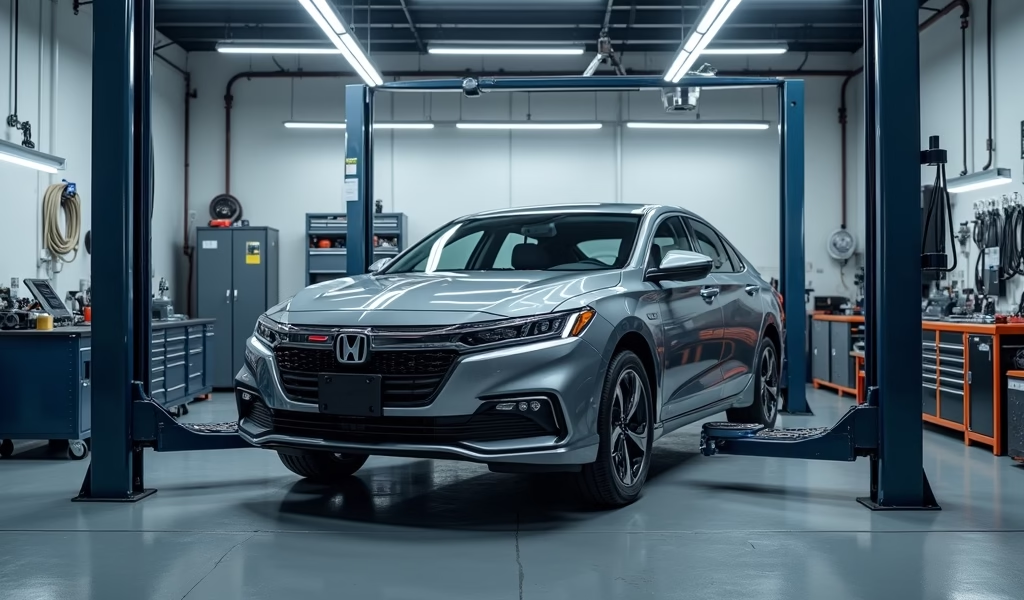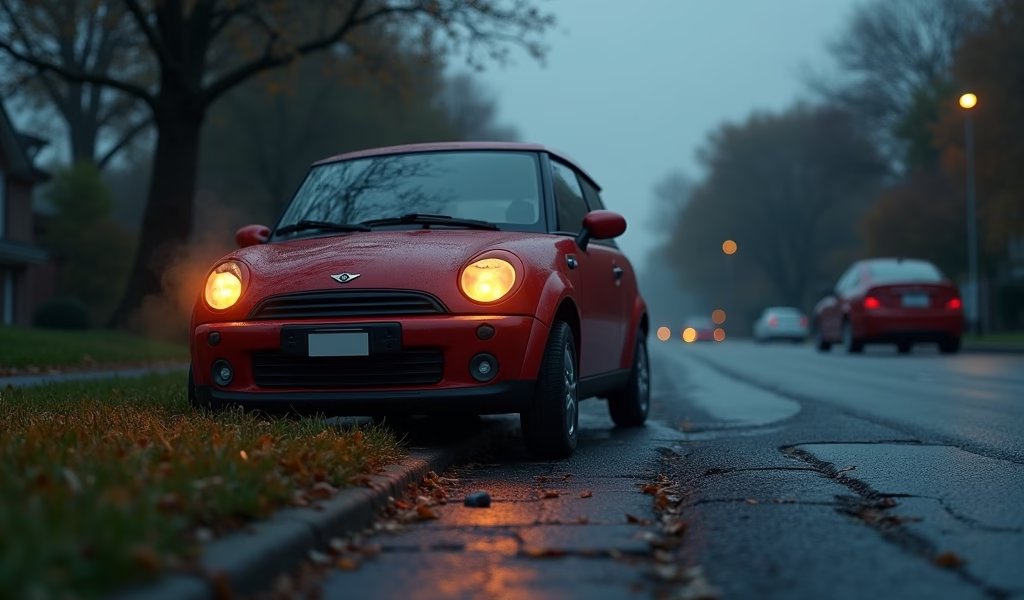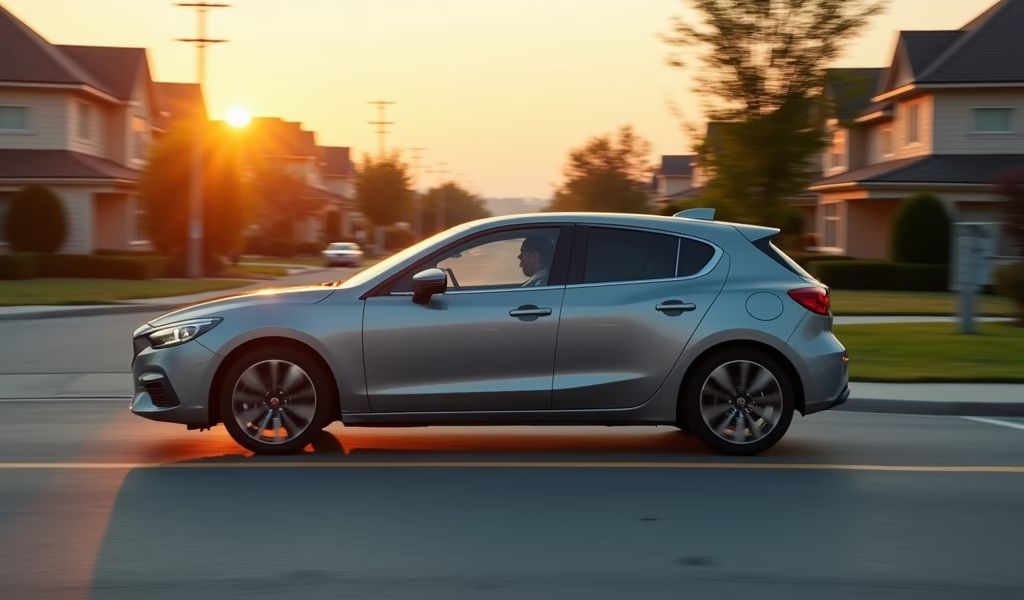Overview
This guide for new drivers explains the factors behind high insurance premiums and offers practical strategies to reduce costs, including taking defensive driving courses, leveraging student discounts, using telematics programs, and choosing appropriate coverage levels. It emphasizes that while new drivers face higher initial rates due to statistical risk, making smart vehicle choices, maintaining a clean driving record, and regularly comparing quotes from recommended insurers can significantly lower insurance expenses over time.
Table of Contents
- Understanding Car Insurance for New Drivers
- What Factors Impact Insurance Costs for New Drivers?
- Types of Insurance Coverage New Drivers Should Consider
- Smart Strategies to Save on New Driver Insurance
- Common Insurance Mistakes New Drivers Make
- Top Insurance Companies for New Drivers
- Technology and Tools to Help New Drivers
- Conclusion
- Frequently Asked Questions
Understanding Car Insurance for New Drivers
Getting behind the wheel for the first time is exhilarating, but the reality of car insurance for new drivers can quickly put the brakes on that excitement. As someone who’s spent over 20 years in both the automotive and insurance industries, I’ve seen countless fresh-faced drivers stunned by their first insurance quotes. The truth is, insurance companies view new drivers as high-risk customers – and they price policies accordingly.
Why such steep rates? It’s all about experience. Statistics consistently show that inexperienced drivers are more likely to be involved in accidents. According to the Insurance Institute for Highway Safety, teen drivers have crash rates nearly four times higher than drivers 20 and older per mile driven. Insurance companies aren’t trying to punish you – they’re simply playing the odds.
But don’t worry! I’m here to guide you through this seemingly complex world with practical solutions that can help make cheap car insurance for new drivers more accessible. Whether you’re a teenager just getting your license, a college graduate buying your first car, or an adult who’s decided to learn driving later in life, this guide will help you navigate insurance options without draining your bank account.
What Factors Impact Insurance Costs for New Drivers?
Understanding what drives those eye-watering insurance premiums is the first step toward finding ways to reduce them. Several key factors come into play:
Age and Experience: Younger drivers typically face higher premiums. The sweet spot for lower rates usually begins around age 25, when statistics show driving habits tend to stabilize. However, driving experience matters regardless of age – a 35-year-old new driver might still face higher rates than their peers who’ve been driving for years.
Vehicle Choice: That sports car might look fantastic, but it could cost a fortune to insure. Insurance companies look at factors like vehicle safety ratings, repair costs, theft rates, and engine size. Generally, modest sedans and smaller SUVs with excellent safety ratings cost less to insure than high-performance vehicles or luxury models.
Geographic Location: Where you live significantly impacts your premiums. Urban areas typically have higher rates than rural areas due to increased traffic density, higher accident rates, and greater theft risk. Even different neighborhoods within the same city can have varying insurance costs based on local claims history.
Driving Record: While new drivers don’t have a history yet, any tickets or accidents will quickly escalate already-high premiums. Maintaining a clean driving record is perhaps the most important long-term strategy for keeping insurance costs manageable.
Credit History: In most states, insurance companies can use credit-based insurance scores to help determine premiums. Studies have shown correlation between credit history and insurance claims, so maintaining good credit can actually lower your car insurance costs.

Types of Insurance Coverage New Drivers Should Consider
Navigating insurance options can feel like trying to understand a foreign language. Let me break down the essentials in plain English:
Liability Coverage: This isn’t optional – it’s required by law in almost every state. Liability coverage pays for damage you cause to other people and their property. Think of it as your financial safety net if you’re at fault in an accident. While state minimums might seem tempting to save money, they rarely provide enough protection in serious accidents. I typically recommend limits of at least 100/300/50 ($100,000 per person/$300,000 per accident for bodily injury and $50,000 for property damage).
Collision Coverage: This pays to repair or replace your vehicle if you’re in an accident, regardless of who’s at fault. For new drivers with newer cars, this coverage is practically essential. However, if you’re driving an older vehicle worth less than a few thousand dollars, you might consider skipping this to save on premiums.
Comprehensive Coverage: This protects against non-collision incidents like theft, vandalism, weather damage, or hitting an animal. Like collision coverage, this becomes more optional as your vehicle ages and decreases in value.
Uninsured/Underinsured Motorist Coverage: This protects you if you’re hit by a driver who either has no insurance or insufficient coverage. Given that approximately one in eight drivers on American roads is uninsured according to the Insurance Information Institute, this coverage provides valuable protection.
Personal Injury Protection (PIP): Required in some states, PIP covers medical expenses, lost wages, and other costs regardless of who caused the accident. It’s particularly valuable for new drivers who might not have robust health insurance.
For most new drivers, I recommend a balanced approach – don’t skimp on liability coverage, but consider higher deductibles on collision and comprehensive to keep premiums manageable. Remember: insurance is about protecting your financial future, not just meeting legal requirements.
Smart Strategies to Save on New Driver Insurance
Now for the part you’ve been waiting for – how to make car insurance more affordable without sacrificing important coverage. Here are my top recommendations based on years of helping new drivers navigate the insurance maze:
Take a Defensive Driving Course: Many insurance companies offer discounts for completing approved defensive driving or driver’s education courses. These classes typically cost between $25-$100 but can lead to premium reductions of 5-15%. The knowledge gained also helps establish safer driving habits from the start.
Leverage Good Student Discounts: For young drivers still in school, maintaining good grades (typically a B average or better) can qualify you for significant discounts. Insurance companies have found that students who perform well academically often demonstrate more responsible driving behavior.
Consider Usage-Based Insurance: Many insurers now offer programs that track driving habits through a smartphone app or plug-in device. If you’re confident in your driving skills, these programs can lead to substantial discounts based on actual driving performance rather than demographic assumptions.
Bundle Policies: If possible, bundle your auto insurance with other policies like renters or homeowners insurance. Multi-policy discounts typically range from 5-25% off each policy. This approach often provides the best cheapest car insurance options without sacrificing quality.
Increase Deductibles Strategically: Raising your deductible from $500 to $1,000 could lower your premium by 15-30%. Just be sure you have enough savings to cover that higher deductible if needed.
Stay on a Family Policy: For young drivers, remaining on a parent’s policy is almost always cheaper than getting separate coverage. This arrangement allows you to benefit from the family’s established insurance history and multi-car discounts.
Shop Around Regularly: Insurance pricing varies dramatically between companies. Get quotes from at least three different insurers, including both national carriers and regional providers. Different companies have different appetites for insuring new drivers.
Remember, insurance companies reward loyalty, but they also count on consumer inertia. Make it a habit to check competitive rates every 6-12 months, especially after you’ve gained some driving experience or had other life changes that might affect your rates.
Common Insurance Mistakes New Drivers Make
After years of helping new drivers set up their first policies, I’ve noticed some recurring mistakes that can be costly. Avoid these pitfalls to make your insurance experience smoother and more affordable:
Choosing State Minimum Coverage Only: While this might save money initially, it creates enormous financial exposure. If you cause a serious accident, minimum liability limits can be exhausted quickly, leaving you personally responsible for remaining damages. Medical costs and legal judgments can easily reach hundreds of thousands of dollars.
Ignoring Discounts: Many new drivers leave money on the table by not asking about all available discounts. Besides the common ones mentioned earlier, ask about discounts for vehicle safety features, taking public transportation part-time, or even membership affiliations with alumni groups, professional organizations, or credit unions.
Paying Monthly Instead of Bi-Annually: Most insurers charge extra fees for monthly payments. Paying for six months at once typically saves 5-10% compared to monthly installments. If possible, budget for this larger payment to avoid the convenience charges.
Neglecting to Update Information: Life changes can affect your insurance rates positively. Moving to a safer neighborhood, decreasing your commute distance, or improving your credit score can all potentially lower your premium – but only if you inform your insurance company.
Assuming All Insurance Companies Rate Similarly: Insurance pricing models vary dramatically between companies. One insurer might heavily penalize new drivers while another specializes in that market segment. Never assume that the company giving your parents or friends the best rate will do the same for you.
Selecting the Wrong Primary Driver: Some families attempt to save money by listing an experienced driver as the primary operator of a vehicle mainly driven by a new driver. This practice, called “fronting,” is considered insurance fraud and can result in denied claims or policy cancellation.

Top Insurance Companies for New Drivers
Not all insurance providers are created equal when it comes to insuring new drivers. Based on my experience in the industry and countless client experiences, these companies consistently offer better value for inexperienced drivers:
State Farm: Their Steer Clear program specifically targets young drivers, offering substantial discounts for completing their safety program. They also offer some of the best good student discounts in the industry, making them a solid option for teen drivers and college students.
Progressive: Known for competitive rates for high-risk drivers, Progressive offers their Snapshot program which can significantly benefit careful new drivers. Their rate comparison tool also makes it easy to see how their prices stack up against competitors.
GEICO: Particularly strong for college students and military families, GEICO offers numerous discounts applicable to new drivers. Their user-friendly digital tools make policy management straightforward for tech-savvy new drivers.
Liberty Mutual: Their RightTrack program rewards safe driving habits, and they offer special discounts for recent graduates. Their partnership with many alumni associations can provide additional savings opportunities.
USAA: If you have military connections (active duty, veterans, or their families), USAA typically offers excellent rates for new drivers. Their customer service consistently ranks among the industry’s best.
Regional Insurers: Don’t overlook smaller, regional insurance companies like Erie Insurance (Midwest and East), Amica (nationwide but strongest in Northeast), or Auto-Owners (Midwest and South). These companies often provide more personalized service and surprisingly competitive rates for new drivers in their service areas.
The best approach is to get quotes from several of these low car insurance companies and compare not just the bottom-line price but also the coverage levels, deductibles, and available discounts. Each insurer has different rating factors that might make them particularly competitive for your specific situation.
Technology and Tools to Help New Drivers
Modern technology offers new drivers powerful tools to both improve driving skills and potentially lower insurance costs. Here are some tech solutions worth exploring:
Telematics Programs: Insurance-sponsored driving monitoring programs like Progressive’s Snapshot, State Farm’s Drive Safe & Save, or Allstate’s Drivewise use smartphone apps or plug-in devices to track driving behaviors. Safe driving habits like gentle braking, moderate acceleration, and avoiding late-night driving can earn significant discounts.
Driving Education Apps: Applications like Drivemode, TrueMotion Family, and DriveWell provide feedback on driving habits without being tied to insurance. These can help new drivers identify and correct risky behaviors before they become habits.
Smartphone Safety Features: Both Apple and Android phones now have built-in driving modes that limit distractions by silencing notifications and even sending automatic replies to incoming messages. Using these features demonstrates responsibility and reduces a major risk factor for new drivers.
Vehicle Safety Technology: When selecting a vehicle, prioritize modern safety features like automatic emergency braking, lane departure warnings, and blind-spot monitoring. Many insurers offer discounts for these technologies, and they provide valuable assistance while new drivers build experience.
Quote Comparison Tools: Websites and apps like Gabi, The Zebra, or Jerry can simultaneously check rates across multiple insurance providers. These tools make it much easier for new drivers to compare options without spending hours on the phone or filling out multiple applications.
Using technology wisely can create a virtuous cycle – better driving leads to fewer accidents, which leads to lower insurance rates, which rewards and reinforces those safe driving habits.
Conclusion
Navigating car insurance as a new driver doesn’t have to be overwhelming. While you’ll likely face higher premiums initially, understanding the factors that affect your rates and implementing the strategies we’ve discussed can make a significant difference in your insurance costs.
Remember that insurance companies are essentially betting on your driving future based on statistical probabilities. Your goal is to demonstrate that you’re a better risk than the average new driver. Through careful vehicle selection, maintaining clean driving records, leveraging available discounts, and using technology to your advantage, you can gradually shift those odds in your favor.
The most important thing to keep in mind is that insurance isn’t just a legal requirement or an unwelcome expense – it’s financial protection for your future. Balancing adequate coverage with affordable premiums is worth the effort.
As you gain experience behind the wheel, continue to shop around periodically, ask about declining new driver surcharges, and maintain awareness of how your changing life circumstances might qualify you for better rates. With time, patience, and smart decisions, those initially shocking insurance quotes will eventually become much more reasonable.
Safe driving isn’t just about avoiding accidents – it’s about protecting your financial future as well. By applying these insights and strategies, you’re well on your way to mastering both the road and the insurance landscape that comes with it.
Frequently Asked Questions
How much does insurance typically cost for a new teenage driver?
Average annual premiums for teenage drivers range from $1,500 to $3,500 when added to a parent’s policy, or $3,000 to $7,000+ for an individual policy. Costs vary significantly based on location, vehicle, and specific company pricing models.
Does taking driver’s education actually lower insurance costs?
Yes, completing an approved driver’s education course typically reduces premiums by 5-15% with most insurance companies. The discount usually applies for 3-5 years after course completion.
Is it better to buy a new or used car for insurance savings as a new driver?
Used cars generally cost less to insure because they have lower replacement value. However, newer vehicles with advanced safety features may qualify for safety discounts that partially offset the higher premium.
How long am I considered a “new driver” for insurance purposes?
Most insurance companies consider drivers “new” or “inexperienced” for the first 3-5 years of licensed driving. Premium surcharges typically decrease gradually as you build a claims-free driving history.
Should new drivers get their own policy or join a family policy?
Joining a family policy is almost always more cost-effective for new drivers than purchasing separate coverage. Multi-car discounts, established insurance history, and the primary policyholder’s good driving record all contribute to lower overall costs.


Pingback: Car Insurance for Students: 7 Care Hacks - knowsyourcar.com
Pingback: Cheapest Car Insurance for New Drivers Under 25 - knowsyourcar.com